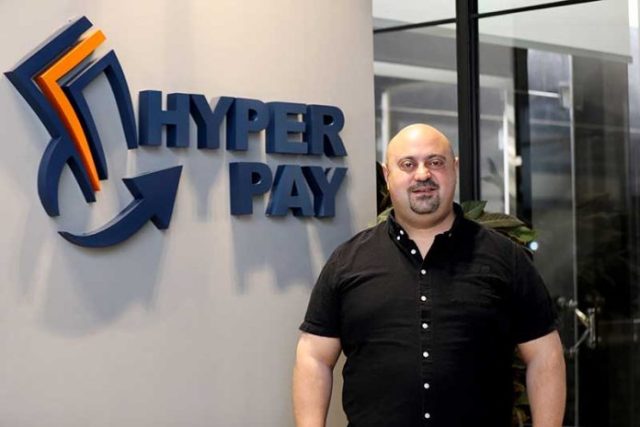The term “cashless society” has been bandied about a lot, but what would the reality be? How exactly would it work, and who would benefit from the shift away from notes and coins? Here, Muhannad Ebwini, founder and CEO of payment service provider HyperPay, fills in some of the blanks.
What will a cashless society look like?
China and Sweden are getting quite close. In 2020, 50 per cent of Chinese consumers made a transaction with mobile payment and, in Sweden, cash transactions currently only account for 20 per cent of total financial transactions in the country. The difference is that, right now, most countries will accept both cash and electronic payments – whether in the form of cards, transfers, mobile apps or mobile wallets, and even cryptocurrencies – but in a fully cashless society, notes and coins would no longer be accepted. Everything would be done electronically, using new and innovative technologies we’ve developed in recent decades, and potentially even technologies we can’t imagine right now. There will also be versions of the future that we are designing right now, such as exciting urban projects like NEOM in Saudi Arabia, a smart city developed around nature, sustainability, and artificial intelligence.
What are the pros and cons of a cashless society?
The main issues relating to a completely cashless society are privacy and hacking concerns, because cash can protect the identity of whoever is spending it (and so facilitate illicit activities) in a way that electronic transactions just can’t. Some would identify potential overspending as a risk, as people might find it easier to stick to a set budget by using physical notes and only carrying those around. And, of course, there’s the risk of overly relying on technology and intermediaries, which may incur additional costs in the long run.
But in the fair, accessible, and inclusive version of a cashless society that we should be working towards, these points can be addressed.
Globally, governments, banks, and providers are still in the process of designing the best iteration of a safe and secure cashless society. That’s a huge advantage in these conversations, because it means we can build it to be safe from hackers, safe from corporations who want to steal your data, and safe from hidden fees and costs! It really is very exciting when you think of it like that. A cashless society would reduce crime rates, as there wouldn’t be any physical money to steal, and it could make international travel infinitely easier. Plus, think of how much we could recover from tax evasion schemes, or save on storing and handling money. It would be a blow to the bank heist movie genre, but fantastic for everyday people.
A cashless society would reduce crime rates, as there wouldn’t be any physical money to steal, and it could make international travel infinitely easier.
What use cases does cashless technology offer?
Besides everyday use in the case of things like household bills, purchases, and transport, which even now are common in a lot of countries, the shift to cashless will expand to a number of uses once governments implement clear policies tackling digitisation. Citizen-to-government payments like healthcare, social services, scholarships and subsidies, education, and much more could be covered by cashless technology.
What does the future of this technology look like?
As I have mentioned, this is what’s really fascinating. At this moment in time, we can only imagine it, but there’s still so much to design and implement. We can build the future of our choice, and it will look however we want it to look.
Smart city designs like NEOM come to mind again, because their goal is to blend physical and digital into a “one-of-a-kind metaverse”, in which basic and essential services would be offered in mobile or contactless form. This would be cheaper than handling cash, and make transactions so much easier to keep track of in a world where everything – our actions, our purchases, our data – would be done digitally.
This article is originally published on August 7, 2022.
Executive Profile
 Muhannad Ebwini is the founder and CEO of HyperPay. Muhannad has led the business to its current position as one of the Middle East’s fastest-growing and most successful online payment businesses. It is regarded as highly innovative and is seen as one of the new generation of payment service providers. The company has offices in Amman, Dubai, Riyadh, and Cairo.
Muhannad Ebwini is the founder and CEO of HyperPay. Muhannad has led the business to its current position as one of the Middle East’s fastest-growing and most successful online payment businesses. It is regarded as highly innovative and is seen as one of the new generation of payment service providers. The company has offices in Amman, Dubai, Riyadh, and Cairo.
In 2017, Muhannad was appointed as a board member of Gate to Pay, a leading card-issuing company providing prepaid MasterCard, Visa, and UnionPay card solutions in the Middle East region.




The Most Read
Сryptocurrencies
Bitcoin and Altcoins Trading Near Make-or-Break Levels
Financial crimes
Thieves targeted crypto execs and threatened their families in wide-ranging scheme
Financial crimes
Visa Warning: Hackers Ramp Up Card Stealing Attacks At Gas Stations
News
Capitalism is having an identity crisis – but it is still the best system
Uncategorized
The 73-year-old Vietnamese refugee is responsible for bringing Sriracha to American consumers
Uncategorized
Electric Truckmaker Rivian, Backed By Amazon, Ford, Raises Whopping $1.3 Billion